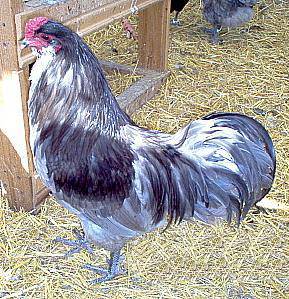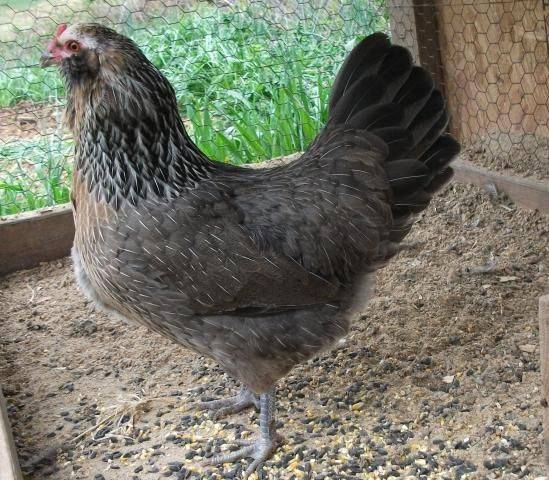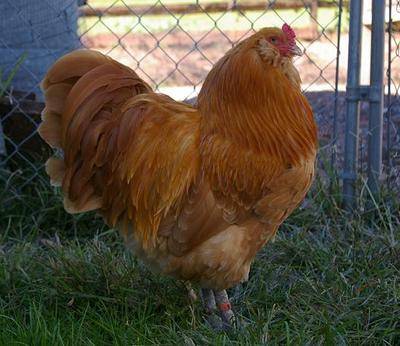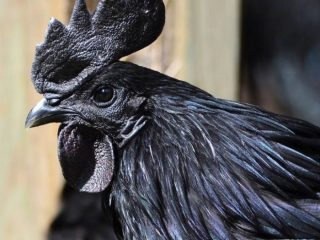Content
How to breed a new breed? Take two different breeds, cross them with each other, compile the names of the original breeds, patent the name. Ready! Congratulations! You have bred a new breed of animals.
It's funny, but in the United States of America there is indeed a practice of calling a two-breed cross of animals the compiled name of the two original breeds, even if it is a cross of the first generation and the parents of the “new” breed live in your house.
For example, what is a “Shnoodle”? No, it's not a schnitzel, it's a cross between a schnauzer and a poodle. And the cockapoo - cocker spaniel + poodle, apparently, will soon become an official breed in the USA.
The Ameraucana chicken breed was developed in approximately the same way. South American chickens Araucana breed crossed with local American hens. Due to the Araucana's ability to transfer the ability to lay colored eggs during crossing, crossbreeds also differ in the original color of the shell of the eggs they lay.
In general, in the Ameraucana breed, apart from the teeth-crushing name, not everything is so sad.Crossbreeding of chickens began in the 70s of the last century, and a new breed was registered only in 1984.
The requirements for the Ameraucana are quite serious so that the first generation hybrid still cannot be classified as a breed.
But professional poultry farmers are offended when they hear such a name. Due to the nuances of shell color formation, they consider the Ameraucana a breed, and not just “a chicken with colorful eggs.”
And the eggs of the Araucana are really multi-colored, since depending on the color of the second parent, the Araucana conveys the ability to lay either blue or green eggs. While the Araucana itself bears only blue ones.
Considering that when developing a new breed, the Araucana was crossed with chickens of various colors, the Ameraucana lays eggs of all shades of blue and green.
Adult chickens, by the way, have a very decent weight: roosters - 3-3.5 kg, chickens - 2-2.5 kg. And the weight of the eggs is quite decent: from 60 to 64 g.
Ameraucana chickens, breed description
There are 8 officially registered colors in the breed.
Wheat blue
Wheat
Red-brown
Blue
Lavender
Silver
Black
Dark yellow
White
With so many standard colors, there simply cannot be many intermediate options. And if we remember the Americans’ passion for a variety of colors in animals, it becomes clear that such intermediate options exist. But everyone can get their original Ameraucana by mixing different colors.
A distinctive feature of the Ameraucan is the sideburns and beard, which are separate tufts of feathers and almost completely hide the head of the chicken, as well as the metatarsus of an unusual dark color.
The Ameraucana looks like a proud, arrogant bird with large brown eyes, with which it will look arrogantly at its owner after destroying a couple of beds of ripe strawberries.
Strong wings will enable the Ameraucana to leave its owner without a harvest of fruit on the trees, since, contrary to the statement “a chicken is not a bird,” this chicken flies very well.
Of course, this will only happen if you don’t bother building an enclosure for the Ameraucana, closed at the top.
Roosters and hens differ little from each other. The combs of Ameraucan chickens are small, while those of the rooster are somewhat larger. The tails also differ little: both are set at an angle of 45° to the bird’s body and both are of medium size. The tail of a rooster cannot be called luxurious. It differs from the chicken feather only in the slight curvature of the feather.
The advantages of the breed are colorful eggs. Moreover, the color and intensity of the eggs of the same chicken often depends on factors known only to the chicken itself. A pattern has been noticed that at the beginning of the next egg-laying cycle, the egg shells are brighter in color than at the end. Apparently the dye cartridge is running low. But whether the eggs will be blue, pink or green (and in the same laying cycle) is most likely determined by the combination of genes that falls on a particular egg. This variation is not surprising, given the history of the breed.
The direction of the breed is meat and egg.Moreover, with a good weight of body and eggs, Ameraucana also has a fairly high egg production of 200 to 250 eggs per year. The laying hen matures somewhat later than purely egg hens: at 5-6 months, but this is successfully compensated for by a long period of productivity: 2 years versus 1 year for egg hens.
However, to guarantee the Ameraucana will have to be bred either in an incubator or under another chicken in which this instinct is well developed.
In general, the Ameraucana has an easy-going disposition. No, this is not a disadvantage. The disadvantage is the aggression of individual Ameraucana roosters towards people and other animals. Since Americans really dislike the slightest manifestations of aggression on the part of animals towards people, they work on this flaw in the breed, isolating the aggressive bird and trying to prevent it from being bred.
Features of cultivation
Apart from the need to produce chicks in an incubator, there are no special nuances in keeping and feeding Ameraucana. For feeding chickens, special feed for chickens is quite suitable. If it is not possible to feed such food, it is quite possible to prepare chicken feed yourself from crushed grains with the addition of animal protein and premixes.
As animal protein, you can use not only traditional boiled eggs, but even finely chopped raw fish.
Ameraucanas need long walks, so a free exit from chicken coop they vitally need an enclosure.
When purchasing chickens, you must keep in mind that the most viable broods are those born in February-March.
Why are Ameraucan breeders offended?
To understand what the breeders' grievances are based on, you will have to figure out exactly how egg shells are colored. Indeed, outwardly, Ameraucans actually lay colorful eggs. So why can’t they be called Easter chickens like other chickens that lay colored eggs?
The color of the egg is determined by the breed of chicken that laid it. This is the outermost layer of the shell. For example, Rhode Island lays brown eggs, but the inside of the shell is white. And the brown “paint” is relatively easily washed off if the egg sits, for example, in chicken droppings for several hours.
Ameraucana, like its ancestor Araucana, has really blue eggs. The shell is colored by the pigment bilirubin secreted by the liver. The Ameraucana egg shell is blue and inside. This, by the way, makes it very difficult to candling the eggs. Thus, both Araucana and Ameraucana carry only blue eggs. Moreover, they are truly blue, and not just “Easter” - painted on top. And the surface color of Ameraucana eggs is determined by a combination of genes responsible for the blue and brown color of the surface layer. In this case, the outer layer of the egg may be blue, olive, green, yellow and even pink.
Besides the fact that “the Ameraucana only lays blue eggs,” there are also problems with the international recognition of this breed.
The Ameraucana standard is accepted only in the USA and Canada. In the rest of the world, only the Araucana standard is recognized, including the one with the tail.Although there is a difference between the tailless Araucana and the tailed Ameraucana even at the genetic level. Ameraucana lacks the lethal gene responsible for the development of tassels in Araucana.
However, at international exhibitions, all chickens that do not meet the Araucana standard are classified as “Easter egg laying” chickens. This is precisely what offends breeders who work on Ameraucana and impose strict requirements on breeding stock.
Ameraucana bantams
Breeders developed a decorative form of Ameraucana - Bentham. Small Ameraucans differ from large ones only in size - the weight of the birds is up to 1 kg, and the weight of the egg is on average 42 g. The remaining requirements for the miniature Ameraucana breed are the same as for large chickens.
Reviews from Ameraucan chicken owners
Unfortunately, Ameraucana is still very rare in the Russian-speaking space and there are practically no reviews of the exotic chicken from Russian-speaking chicken breeders. On English-language forums, reviews mainly boil down to discussing the problem of egg color. Due to intrabreed splitting, the breed is not yet established, the color of the egg often does not meet the expectations of the owners.
A review from one of the few Ameraucan owners living in Barnaul can be seen in the video.
A video from another owner from the city of Balakovo convincingly proves that Ameraucana chickens actively lay eggs even in winter.
Conclusion
The Ameraucana breed is gaining popularity in Russia and, perhaps, soon there will be at least a few Ameraucana heads in every yard.


































I bought 5 Ameraucana chickens. The chickens are great. Started at 5 months, every day. The shades of eggs are different.
Reviews are good about these chickens. Excellent hens. And in the incubator the yield is 95%.